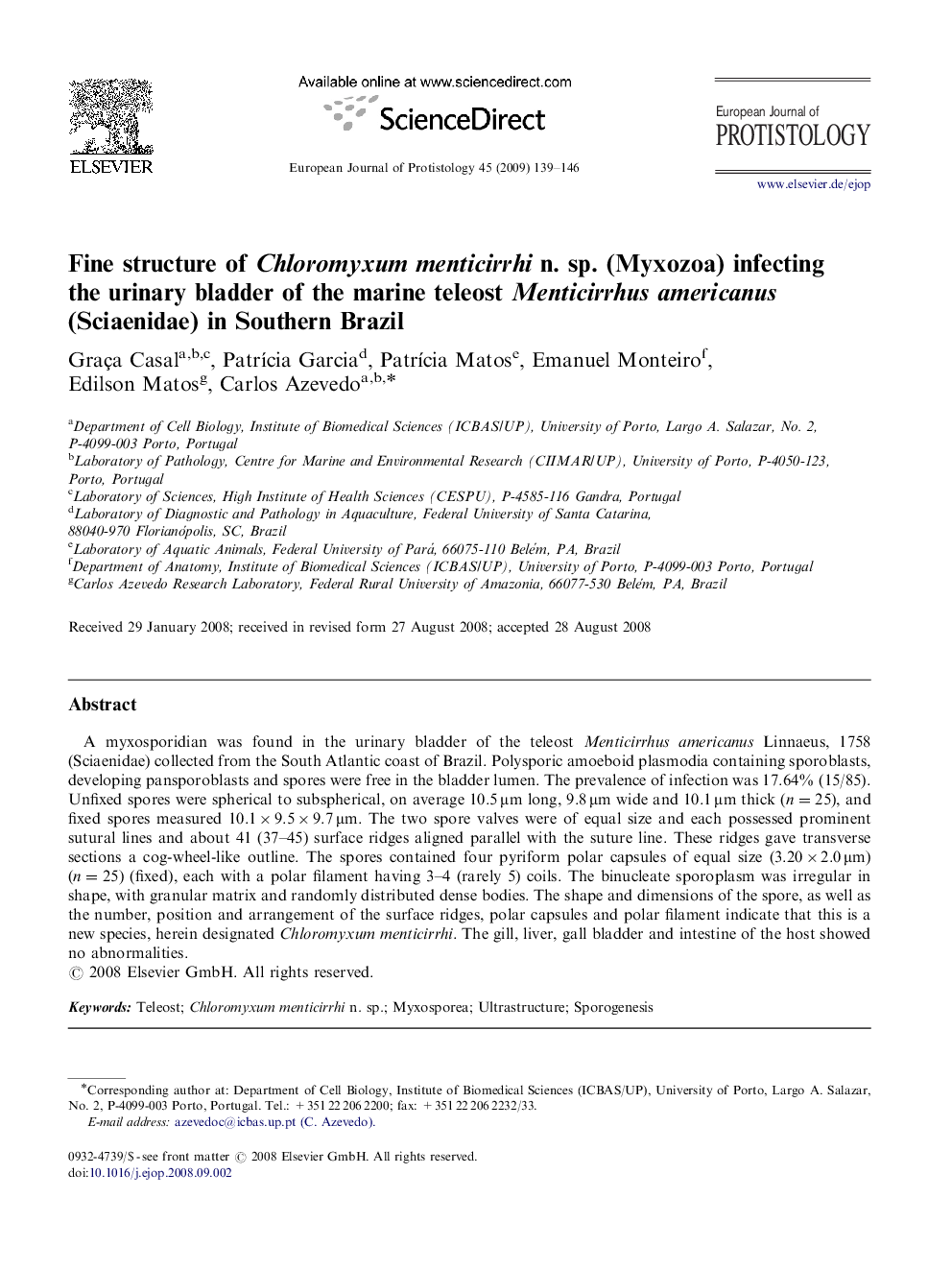| Article ID | Journal | Published Year | Pages | File Type |
|---|---|---|---|---|
| 2047337 | European Journal of Protistology | 2009 | 8 Pages |
A myxosporidian was found in the urinary bladder of the teleost Menticirrhus americanus Linnaeus, 1758 (Sciaenidae) collected from the South Atlantic coast of Brazil. Polysporic amoeboid plasmodia containing sporoblasts, developing pansporoblasts and spores were free in the bladder lumen. The prevalence of infection was 17.64% (15/85). Unfixed spores were spherical to subspherical, on average 10.5 μm long, 9.8 μm wide and 10.1 μm thick (n=25), and fixed spores measured 10.1×9.5×9.7 μm. The two spore valves were of equal size and each possessed prominent sutural lines and about 41 (37–45) surface ridges aligned parallel with the suture line. These ridges gave transverse sections a cog-wheel-like outline. The spores contained four pyriform polar capsules of equal size (3.20×2.0 μm) (n=25) (fixed), each with a polar filament having 3–4 (rarely 5) coils. The binucleate sporoplasm was irregular in shape, with granular matrix and randomly distributed dense bodies. The shape and dimensions of the spore, as well as the number, position and arrangement of the surface ridges, polar capsules and polar filament indicate that this is a new species, herein designated Chloromyxum menticirrhi. The gill, liver, gall bladder and intestine of the host showed no abnormalities.
